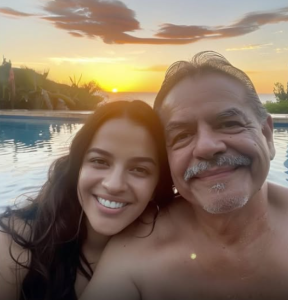🌧️ The Quiet After the Storm: A Story in 1000 Words
She didn’t remember the moment itself—only the aftermath. The sterile white of the hospital ceiling. The hum of machines. The quiet murmur of nurses speaking in code. She was 22, and her world had just been split in two: before and after.
Her name was Lena. She had been walking home from a friend’s apartment, a route she’d taken a hundred times. Familiar streetlights. Familiar cracks in the pavement. But that night, something changed. A shadow stepped out from the alley. A voice she didn’t recognize. A force she couldn’t fight.
The next thing she knew, she was in the ER. Her clothes had been cut away. Her body examined. Her voice, when she tried to speak, came out as a whisper. “I’m okay,” she said. But she wasn’t.
🩺 The Hospital Room
The room was quiet. Too quiet. Her mother sat beside her, eyes red, hands trembling. Lena didn’t cry. Not yet. She felt hollow, like someone had scooped out her insides and left her skin behind.
Doctors came and went. They spoke in gentle tones, careful not to say the word. But Lena knew it. Penetration. Assault. Trauma. Words that felt clinical, detached. Words that didn’t match the storm inside her.
A counselor arrived. She didn’t ask questions. She just sat, offering silence as a kind of balm. Lena stared at the wall, counting the tiles. She wanted to disappear into them.
🧠 The Mind’s Maze
In the days that followed, Lena’s body began to heal. But her mind was a maze. She couldn’t sleep. Couldn’t eat. Every sound felt like a threat. Every touch, even from loved ones, made her flinch.
She replayed the night in fragments. The footsteps. The grip. The cold. She blamed herself. For walking alone. For not fighting harder. For surviving.
But slowly, the counselor helped her untangle those thoughts. “You did nothing wrong,” she said. “What happened to you was a crime. And you are not to blame.”
Lena didn’t believe her at first. But the words planted seeds.
🧘 The Path to Healing
Healing wasn’t linear. Some days, Lena felt strong. She went for walks. She wrote in her journal. She painted—abstract swirls of color that expressed what words couldn’t.
Other days, she stayed in bed. She ignored calls. She stared at the ceiling, wondering if she’d ever feel normal again.
But she kept going. She joined a support group. She met other survivors. They shared stories—some raw, some hopeful. And in their voices, Lena found echoes of her own.
She learned about trauma. About how the brain protects itself. About how healing is not forgetting, but integrating.
💬 Speaking the Truth
Six months later, Lena stood in front of a small crowd at a community center. It was a survivor’s event. She held a microphone with trembling hands.
“I didn’t think I’d ever speak about this,” she began. “But silence doesn’t protect us. It isolates us.”
She told her story—not in graphic detail, but in emotional truth. She spoke of fear, of shame, of the long road back to herself. And when she finished, the room was silent. Then someone clapped. Then another. And then the whole room rose.
Lena cried for the first time in months. Not from pain—but from release.
🌱 Reclaiming Life
Lena went back to school. She studied psychology, determined to help others navigate the storm she had survived. She volunteered at crisis centers. She wrote essays. She spoke at panels.
She still had bad days. Triggers. Flashbacks. But she had tools now. She had people. She had purpose.
And she had herself—stronger, wiser, and more whole than she ever thought possible.
🕊️ Final Thoughts
This story isn’t about what happened to Lena. It’s about what she did afterward. It’s about reclaiming power, voice, and identity. It’s about turning pain into purpose.
For anyone who’s endured trauma, know this: you are not alone. Your story matters. Your healing is valid. And there is light beyond the storm.


